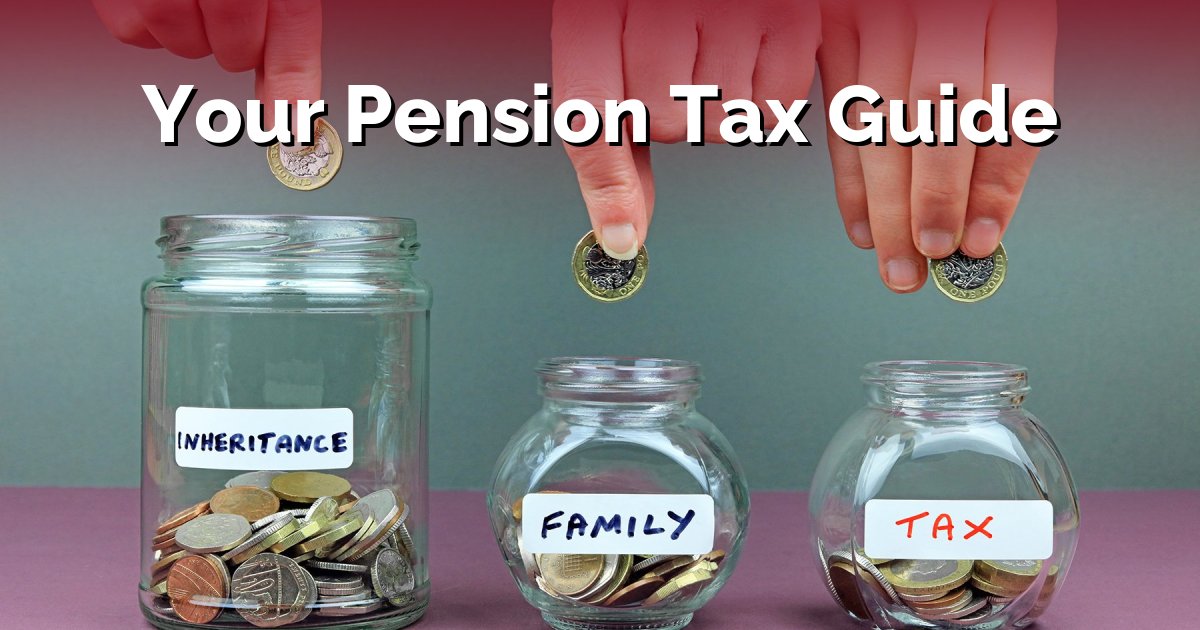Pension Tax – A Guide to HMRC Pension Tax Relief
Tuesday 30 July, 2024
Navigating the complexities of claiming higher rate tax relief on pension contributions in the UK requires careful attention to detail and adherence to HMRC guidelines. For taxpayers falling under the higher or additional rate brackets, this process ensures they receive the full benefits to which they are entitled.
In this article, our Financial Adviser, Paul Jansen, based at our office in Chippenham, Wiltshire, examines the importance of maximising tax efficiency while complying with regulatory requirements.
Whether you are new to managing pension contributions or seeking to optimise your tax relief strategy, our guide aims to provide clarity on the necessary steps involved.
Claiming higher rate tax relief on a pension contribution in the UK involves a few steps, as it isn't automatically granted for higher or additional rate taxpayers. It can also be a more complex procedure if you have more than one pension to consider.
Should you be in the position of having more than one pension pot, we recommend discussing your individual circumstances with one of our professional financial advisers.
Here’s Paul Jansen’s detailed guide on how to do it for single pensions:
1. Understand the Basics
- Basic Rate Tax Relief: When you contribute to a pension, your pension provider usually claims basic rate tax relief (20%) from HMRC and adds it to your pension pot. For example, if you contribute £80, the provider claims £20, making a total contribution of £100.
- Higher and Additional Rate Tax Relief: If you pay tax at a higher rate (40%) or additional rate (45%), you need to claim the additional relief on your self-assessment tax return.
2. Check Your Eligibility
Ensure you are paying higher or additional rate tax. You qualify if your income exceeds the basic rate threshold (£50,270 for the 2024/2025 tax year).
3. Claiming Through Self-Assessment
If you are required to complete a self-assessment tax return, you can claim the additional tax relief by:
a. Registering for Self-Assessment
If you aren't already registered, you'll need to do so by the 5th October following the tax year in which you made the pension contributions. You can register online through the HMRC website.
b. Filing the Tax Return
When completing your self-assessment tax return, follow these steps:
- Log in to your HMRC account and select "Self Assessment."
- Navigate to the 'Pension Contributions' section under the "Tax reliefs" tab.
- Enter your gross pension contributions: This is the amount including the basic rate tax relief. For instance, if you contributed £80, you should enter £100.
- Calculate your additional relief: HMRC will automatically calculate the additional relief due based on your tax band.
c. Submit Your Tax Return
Complete and submit your tax return by the 31st January following the end of the tax year. Ensure all relevant pension contributions and other financial details are accurately reported.
4. Claiming Without Self-Assessment
If you do not need to file a self-assessment tax return, you can still claim the additional relief by writing to HMRC:
- Contact HMRC: Provide your National Insurance number, the gross amount of your pension contributions, and details of your pension provider.
- Adjust Your Tax Code: HMRC can adjust your tax code to account for the higher rate relief, which will be reflected in your PAYE (Pay As You Earn) income.
5. Using Online Services
Some employers and pension schemes offer online services where you can manage and track your contributions. These platforms sometimes provide guidance on how to claim higher rate tax relief.
6. Example Calculation
- Contribution: You make a personal pension contribution of £8,000.
- Basic Rate Relief: Your provider claims £2,000, making a gross contribution of £10,000.
- Higher Rate Taxpayer: You can claim an additional 20% (higher rate) on the gross contribution, which is £2,000.
- Additional Rate Taxpayer: You can claim an additional 25% (additional rate) on the gross contribution, which is £2,500.
Multiple Pension Schemes
If you have multiple pension pots accumulated over your career from various employers, seeking advice from a financial adviser is recommended. Consolidating pension pots can streamline management, reduce the administrative burden, and potentially lower fees.
Our qualified financial advisers can assess each pension’s performance, fees, and investment strategy, helping you make informed decisions that align with your retirement goals. At Lonsdale, our advisers specialise in pension planning and can provide personalised strategies to optimise your pension portfolio, ensuring it remains cohesive and effective throughout your retirement journey.
Summary
In summary, claiming higher rate tax relief on pension contributions demands proactive engagement with HMRC through self-assessment or direct correspondence, depending on your tax filing obligations. Timely and accurate submission of your claims is crucial to accessing the additional relief you are entitled to as a higher or additional rate taxpayer.
At Lonsdale, our team stands ready to assist you should you require further guidance or support in navigating these procedures. By partnering with us, you can ensure that your financial planning aligns seamlessly with your tax obligations, paving the way for a secure and optimised future.
Investment Risks: The value of investments and any income will fluctuate (this may partly be the result of exchange rate fluctuations) and customers may not get back the full amount invested. Views and opinions are based on current market conditions and are subject to change. This is marketing material and not financial advice. It is not intended as a recommendation to buy or sell any particular asset class, security or strategy. Past performance is not a reliable indicator of future performance.
Latest News Next Article Previous Article


